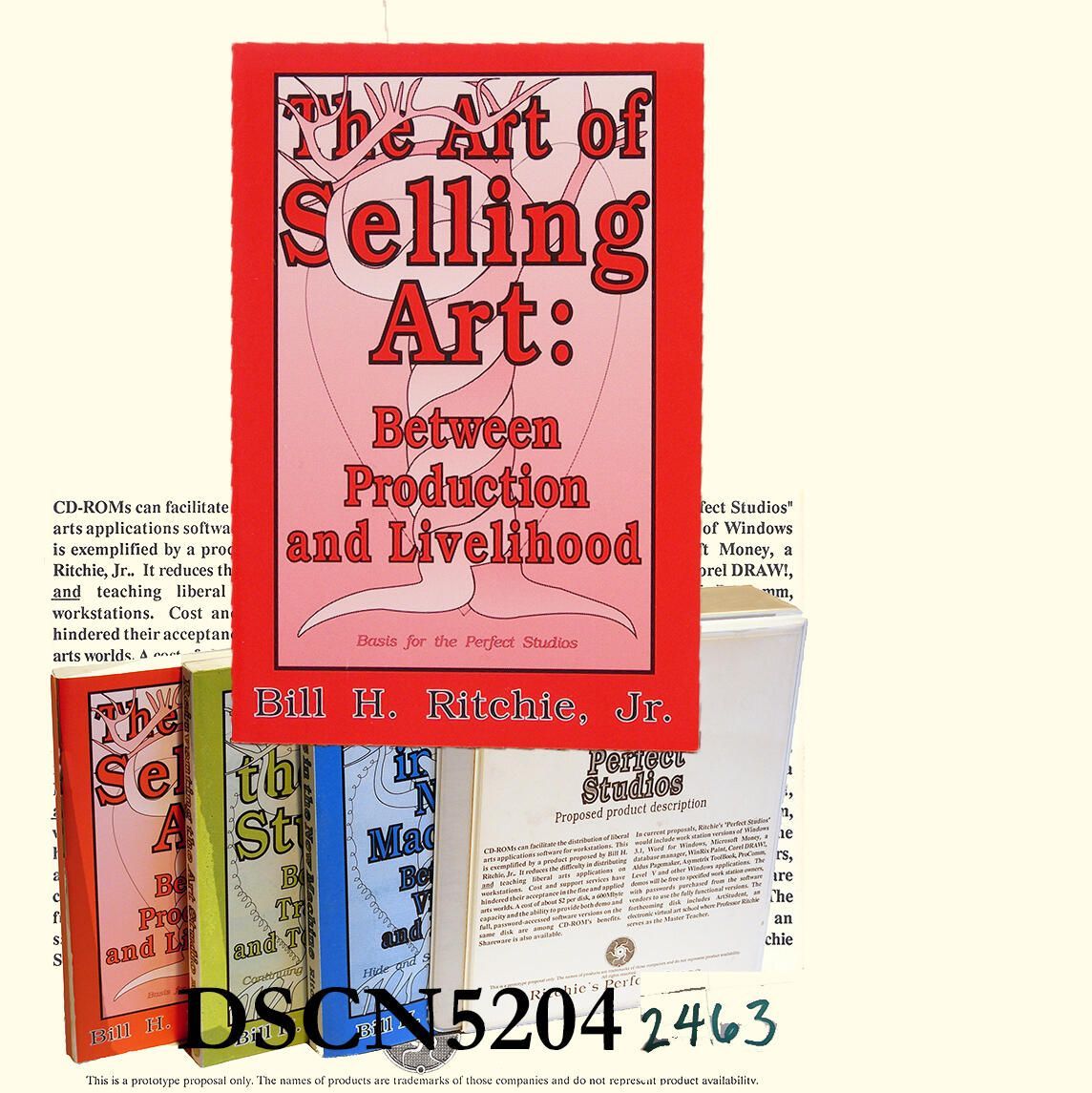Perfect Studios Trilogy

Montage - The Perfect Studio Trilogy, a boxed set.
Begun in 1987, two years after he resigned from the University of Washington School of Art, Bill Ritchie was teaming up with his former graduate student, Carl Chew, to create the CD/ROM, "Art Student," premised on their belief there were things the art school was not teaching. The CD/ROM would contain this book as a primer because the economics of an art career depended on selling art, either as products or as services. Either way, their project would benefit students because it outlined tried-and-true methods of marketing and selling art or the person behind the art. Three books would comprise the backbone of the CD/ROM. "The Art of Selling Art" would face up to the acts of living between production and livelihood. "Reinventing the Art Studio" addressed the new technologies that would change artists' methods and roles. The third book would have been, "Ghosts in the New Machine," talking about the lingering conceptions that would inevitably prevent most artists from being all that they could be in a perfect world. The Perfect Studio Trilogy got its name from Ritchie's notion of an art school patterned after the teaching hospital and teaching company - the former he learned about because the UW Hospital is one and, second, books written by a local team about "Intrapreneurship," i.e., smart companies where new ideas were allowed to grow within their walls. Because technologies were changing so fast in this period, Ritchie could not keep his manuscript going at the same pace as new machines were being marketed. The manuscripts remain in the rough draft in digital files only. The two books in the illustration are dummies. That is, they are copies of the finished, self-published Art of Selling art wrapped in color copies of Ritchie's planned cover designs.
